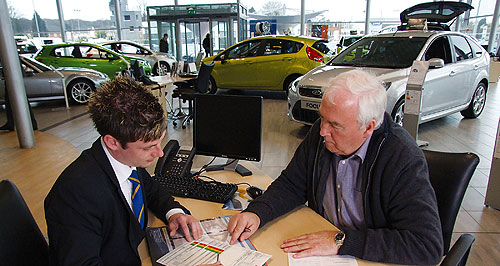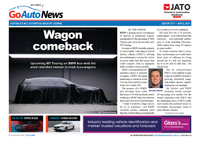Make / Model Search
News - General NewsNew superannuation rules to hit dealersSuper-duper: New superannuation rules for dealers and other employers mean payments to multiple funds will be made easier. New rules aim to make it easier to make payments to multiple superannuation funds31 Mar 2015 By IAN PORTER DEALERS and other employers will have to collect more information from employees in order to comply with new SuperStream rules governing the payment of superannuation contributions on behalf of employees. Motor industry superannuation funds are urging automotive industry employers to get cracking now so they are ready when the new system comes into force on July 1. The good news for smaller employers, those with 19 employees or less, is that the Australian Tax Office is offering a free clearing house service to ensure that all super payments get to the correct funds. Robert Jackson, a partner in Deloitte Private which specialises in self-managed super funds, told GoAuto that SuperStream is being introduced to improve the efficiency of the national superannuation system. “Australians have over $15 billion in lost or unclaimed superannuation payments,” Mr Jackson said. “The government’s response is SuperStream.” Mr Jackson said there were a couple of reasons why this large amount of unclaimed cash had piled up. “When an employer does not have sufficient information to make a correct super payment, the employer makes a contribution on behalf of an employee to a default fund,” he said. “On the flipside, employees or members are often apathetic, especially when you consider the 18-to-30-year-old demographic. It’s not hard to imagine that 18-30-year-olds are not engaged with a pile of money they can’t see or touch for another 30 years.” Mr Jackson said the essence of SuperStream is that a packet of data will be attached to a single super payment made by an employer. The packet of data will detail the super payment made for each employee and which super fund each payment has to go to. This means all employers will have to have electronic payroll systems and the extra employee data to make the system work. When the clearing house receives the payment, it checks the information and distributes the super payments to the correct super funds as designated by the employees. For the new system to work, the employer has to collect all the relevant information, Mr Jackson said, including a unique identifier for the employee. “There is additional information to collect.” He said an employer should already have the employee’s tax file number, name of the member’s super fund, its electronic address and the fund’s Australian Business Number. Now they also have to collect the employee’s unique superannuation identifier. That identifier comes from the employee’s super fund. “If there’s not an existing super fund, then they set up, under their default scheme, a new fund. And the critical thing here is an industry fund or retail fund will now advise what the relevant or unique identifier is,” he said. “That’s something SuperStream has done. It means that the fund now provides you with an appropriate code.” Mr Jackson said the new system will not only speed payroll processing for employers, it will also cut down the number of enquiries from employees asking where their super is. “It will eliminate time and effort for the employer, and it needed to do so to encourage the employers to participate,” he said. “When you look at the scheme in terms of the carrot and the stick, there is actually quite a carrot out there to encourage employers to do this.” The SuperStream differentiates between large and small employers, the latter having fewer than 20 employees. Given the initial bookwork burden the new rules could impose on a small business, the Australian Tax Office has created a free service to handle the super payments from small employers, the Small Business Superannuation Clearing House. The smaller employers get an extra year to comply with the SuperStream rules. Their start date is July 1, 2016. Employers with 20 or more workers have to be ready by July 1, 2015 and have several options. They can either upgrade their existing payroll software so it conforms with SuperStream requirements, have their outsourced payroll service provider handle it or engage an external clearing house. MTAA Super has established just such a clearing house, called QuickSuper, for members of the Australian Motor Industry Federation (AMIF), and other employers, to use. This is one of the larger industry super funds, having assembled $8.5 billion of assets since it was established in 1989. The average return in that time has been 7.5 per cent. According to MTAA Super chief executive Leeanne Turner, the QuickSuper clearing house delivers the advantages built into the SuperStream regime, but also has a network of advisors to assist AMIF employers. Ms Turner said MTAA Super had a network of business development managers help keep employers stay up to date with their superannuation responsibilities. The business development managers also host workplace seminars to educate employees in their workplaces about the superannuation system. While large employers have to be ready by July this year and smaller employers by July 2016, the Australian Tax Office is not being dogmatic about it. It expects employers to comply with the new rules, but it has made it clear it is prepared to cut employers some slack. While the legislation makes it compulsory to comply, Deloitte’s Robert Jackson says the ATO has indicated that its policing of SuperStream this year will be more around support and education rather than penalties. “One would expect, typically, there would be another 12 months or so while the ATO assesses how the process has been implemented and then the ATO will determine what the next phase is. They do that every 12 months.”  |
Click to shareGeneral News articlesResearch General News Motor industry news |









Facebook Twitter Instagram